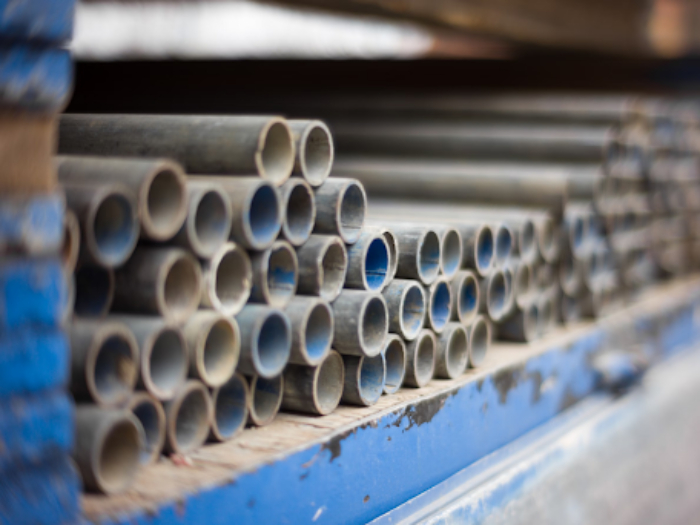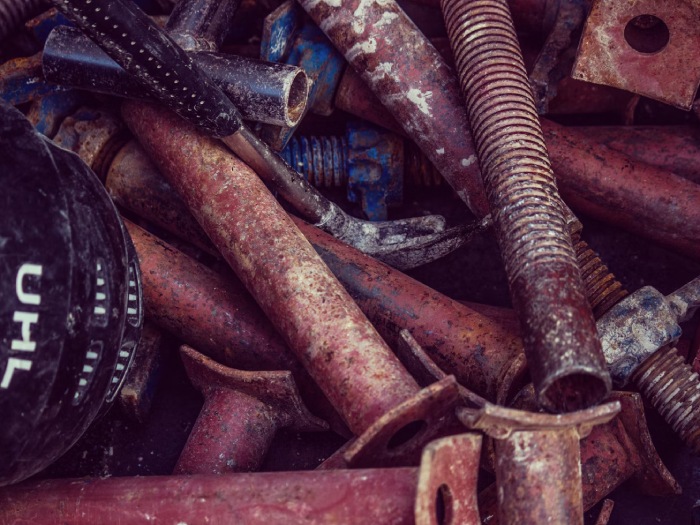Metal is one of the most important resources in the world. It's used for a whole variety of things, from homes to cars to gadgets to everyday items that make our lives so much easier and more comfortable.
But is metal a sustainable resource? Believe it or not, the answer is still up for debate – and unfortunately, it's not as clear as we'd like.
What is sustainability and is metal sustainable?

In its simplest sense, sustainability means meeting the needs of our current generation without suppressing the future generation's ability to meet their own.
This means that for a resource to be considered sustainable, it also has to be renewable – or at least not significantly have its natural availability depleted through continuous usage.
Going by this definition then, one can argue that metal is not a sustainable resource.
After all, it's not a renewable material. It doesn't grow back, nor does it breed more of it. Once you've taken a metal from its natural location, it's gone forever.
Mines themselves can also become depleted. Such is the case with mines worldwide that have been so overused they led to a decline in the local area's other natural resources. And yet, despite everyone's efforts, no amount of digging can increase the number of precious metals in that location.
That said, for what it lacks in renewability, metal makes up for with its recyclability.
They can be used over and over again with only a little difference in their natural properties. For instance, steel, brass, and copper can be continuously remoulded into something else. So, although neither biodegradable nor renewable, the durability of metals means they have a long service life before they need replacing.
With this, the answer to “Is metal sustainable?” has become more complex. Although it's not renewable, its ability to be recycled over and over does mean it can be maintained for a long period of time – the only problem now is whether that's enough to call it a sustainable resource.
How does metal compare to other building materials?
Metal is a common building material, so it's only natural to wonder how it compares to other materials available to us.
Metal vs. timber
Timber is renewable and biodegradable, which gives it an edge in sustainability. However, it's less durable than metals like steel and aluminium and needs more maintenance.
Metal vs. concrete
Concrete is another common building material. Unfortunately, it's a major source of CO2 emissions due to the chemical reactions involved in cement production. In fact, it's estimated that the cement industry alone causes up to 9% of all CO2 emissions made by humans.
Steel, while also energy-intensive to produce, has a lower overall carbon footprint when recycled. Also steel structures can be more easily modified or expanded compared to concrete buildings.
Metal vs. plastic
Plastic is relatively lightweight and versatile. But while plastic can technically be recycled, it does have lower recycling rates than metal. That's because not all plastics are recyclable and the process of creating new plastic is extremely energy-intensive.
Which metals are recyclable and environmentally friendly?
- Is steel sustainable? One great thing about steel is that it can be repeatedly recycled without affecting its inherent properties. That said, steel production is very energy-intensive and environmentally harmful.
- Is corten steel sustainable? Also known as weathering steel, corten steel is not only recyclable but also durable enough to last a long time.
- Is galvanised steel sustainable? The main difference between galvanised steel and regular steel is its zinc coating. It's also recyclable the same way steel is.
- Is carbon steel sustainable? Carbon steel has a high carbon content, and this makes it harder and stronger than regular steel. But apart from not being as versatile, it's also weaker to rust and corrosion so you'd have to replace it more often.
- Is iron sustainable? Iron is highly recyclable. The biggest problem with it is its production process. Iron mining has a lot of downsides, which we'll cover below.
- Is aluminium sustainable? Aluminium requires significantly less energy to recycle than to produce new. It's considered one of the most eco-friendly metals available, though it's not as strong as steel.
- Is zinc sustainable? Zinc is a common metal. It's recyclable, but the main reason for its sustainability is the fact that it can be reused in various applications.
- Is copper sustainable? Copper is also recyclable and sustainable the same way zinc is. It has many different uses and can be recycled without losing its quality.
- Is gold sustainable? Gold, though technically recyclable, has a very energy-intensive mining process. Many stories of destruction that resulted from mining actually happened in the search of gold.
- Is silver sustainable? Silver, like gold, is recyclable. Sadly, like gold as well, it's often mined through environmentally harmful processes.
- Is titanium sustainable? Titanium also has an intensive mining process, but it's much stronger, more durable, and more recyclable than gold and silver.
Metal production: is mining bad for the environment?

As we now know, not all metals are created equal in terms of sustainability. Usually, it's not the metal itself but rather how it's produced.
Truth be told, there are simply some metals whose mining process is too degrading to the environment.
One example is gold, which has a pretty intensive mining process. In Para, Brazil, gold mining has caused massive deforestation and water poisoning. In Eastern Siberia, the callous attitude of large mining corporations has caused deadly floods, decimated animal populations from rivers and forests, and ruined the local environment. And just recently, in Davao, Philippines, a landslide in a gold-mining village killed six residents and injured 31 more.
Another example is copper. Copper mining in Laos has been causing several problems for villages nearby – river fish have disappeared, the water has become polluted and unpotable, and stream banks are also eroding.
That's not to mention one of the biggest disasters in mining history, the 1996 Marcopper disaster in the Philippines. Due to the company's negligence, a leaking pipe caused over 2 million tons of waste material to spill into a nearby river. In the flash food that ensued, entire villages became buried in mining waste. About 20,000 people living in 20 nearby villages were forced to evacuate.
Worse, the incident effectively killed the Boac River. For decades, it became unusable and inhabitable. Even in 2016, two full decades after the incident, the river was still a cloudy blue colour, proof of its highly acidic content due to the Acid Mine Drainage (AMD).
Aside from its direct environmental impact, metal mining has direct health consequences for people as well. In China, iron ore miners and their families have been getting afflicted with lung diseases for years. The same is happening in India, South Africa, and even the USA.
How to enhance metal sustainability?

For all our talk about how metal production can be severely damaging to the environment, we do acknowledge that there's still a sliver of hope.
With effort, there are some steps that can be taken to make mining more sustainable.
For one, companies can adopt more efficient “green” technologies in order to reduce energy consumption and lower emissions. Some of the technologies being explored include portable rigs, hybrid loaders, and slag binders.
Two, recycling metals significantly reduces the need for mining. While it doesn't completely eliminate the negative impacts on the environment, it does alleviate it a bit.
And lastly, reclaiming and rehabilitating mined land can help restore ecosystems and provide new habitats for wildlife. Australia has plenty of these projects, starting from mine rehabilitations to wildlife recovery.
An example of a successful story is Niederkorn, Luxembourg. A mine rehabilitation project prompted the return and population increase of a protected species, the Greater Horseshoe Bat.
So, by improving mining practices, enhancing recycling, and using metals responsibly, we see how it's possible to reduce the environmental footprint of metal and guarantee its availability for future generations to come.

